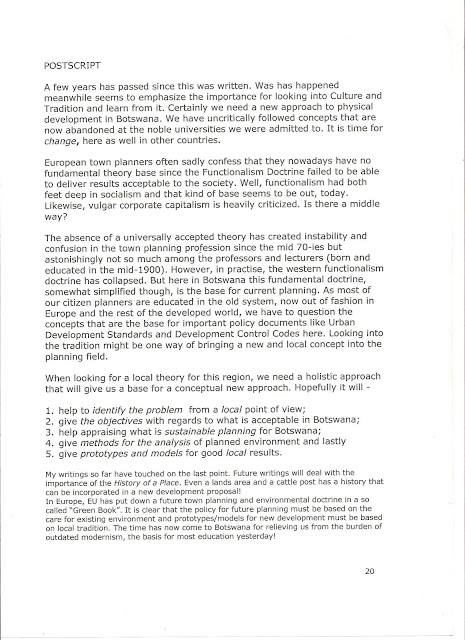My intentions were to explain the conceptual background to Sowa Town by presenting a few projects prior to Sowa (e.g. Moshupa, Mochudi, Kanye, Ramotswa and more).
However, some readers wanted to know the basis for 'the traditional concept' used for Sowa and I think that this might be a good idea.
Consequently, I have created a blog for my rather unacademical paper on "The Traditional Tswana Village - a neglected planning prototype" from the 90-ies.
The paper is based on my personal 'notes and records' - my findings in the past. So, it is the background to an architect/planner "At Play in the Field of the Lord" (with reference to Peter Matthiessen - to make it 'academical').
However, by luck, I happened rather lately to to find some writings by professor Mason (now emeritus and reverend, something that often happens to brains dedicated to spiritual approaches to life).
As explained in the Sowa blog, he can explain and prove that the Tswana spatial planning of towns has been around for more than 500 yrs. So, my writings doesn't come out of blue air! It is now an academic fact that the Tswana tradition for planning the homes and neighbourhoods is very old and in use well before it became a fashion in well planned western areas.
This is something we must keep in mind and be proud of and not mindlessly subscribe to western planning principles. There is (or should be) a traditional
basis for our planning. This is so called critical regionalism in modern terms, these days when most concepts must be an -ism.
This is the basis for my paper - the pages will follow and can be enlarged if clicked on (and clicked again for more enlargement).
Hope you enjoy your reading!
Jan Wareus in April 2011
click here to go back to main blog




















